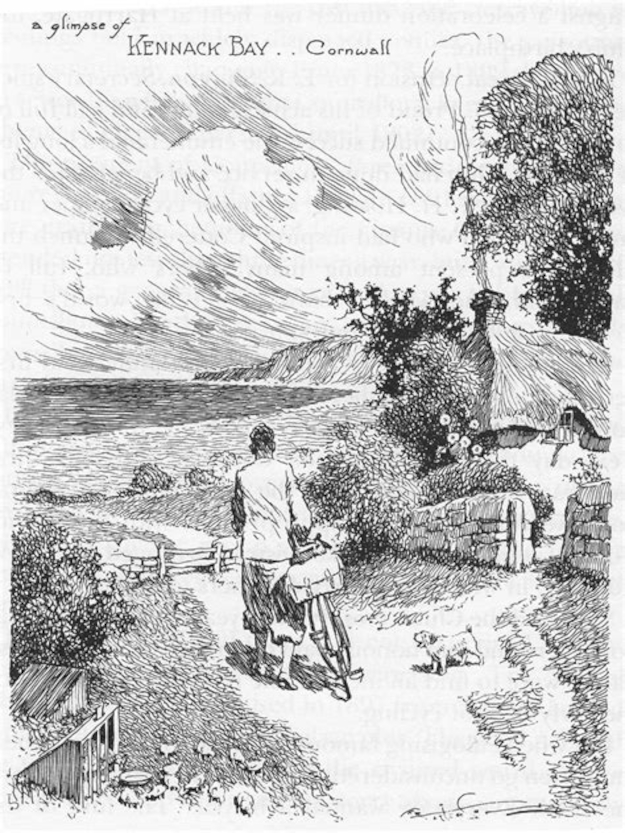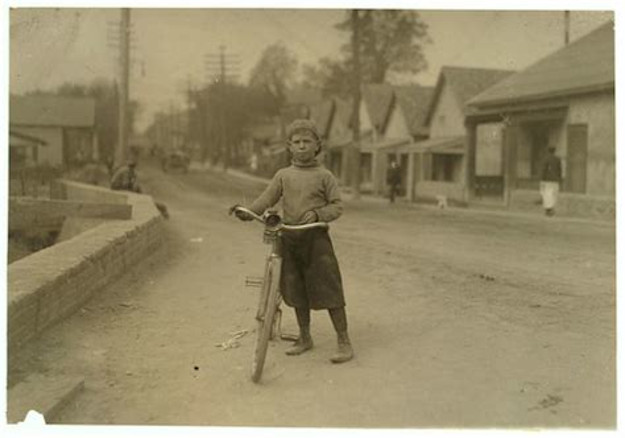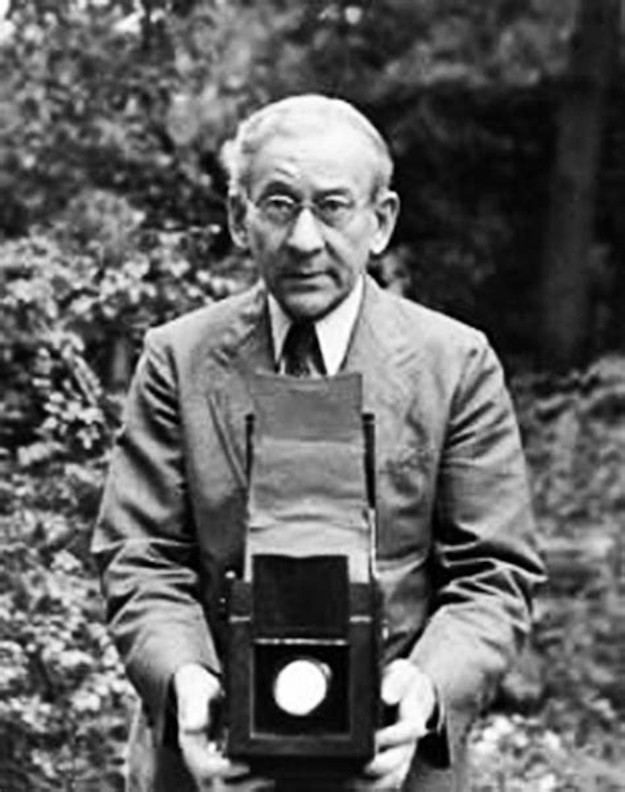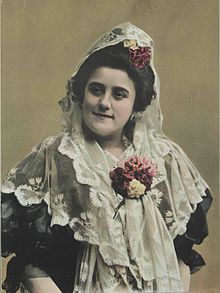Frank Patterson (1871 – 1952) is a good example of how one can pedal in a myriad of modes. He participated in what is know as the golden era of cyclist through 26,000 pictures between 1890 and 1952. Such images appeared in the magazines Cycling Weekly, The CTC Gazette, his book The Patterson Book (1948) and several collections about his work.
When he moved from Portsmouth to London in 1890, he already knew how to ride a bike. He had his first bicycle in London where not only did he rode its streets, but also reached the countryside, always making pictures in which his bike was present. At the age of 38 a knee injury that made him unable to pedal for the rest of his life. However, his perseverance provoked continuing creating art in drawings thanks inspired by photographs and postcards sent by friends. In 1944 he was awarded with the Bidlake Memorial Prize which recognized who tried to improve the World through bicycles. For example, some of his pictures got in magazines to the British front in the Second World War, assuring soldiers high morale who dreamed to come home safe and sound in order to pedal such delicious landscapes. He pictured about England, Ireland, Scotland, Gales and France. On 14th September 1974, the Cyclist Touring Club dedicated a plaque in its headquarters in Guilford, England, in his memory.



